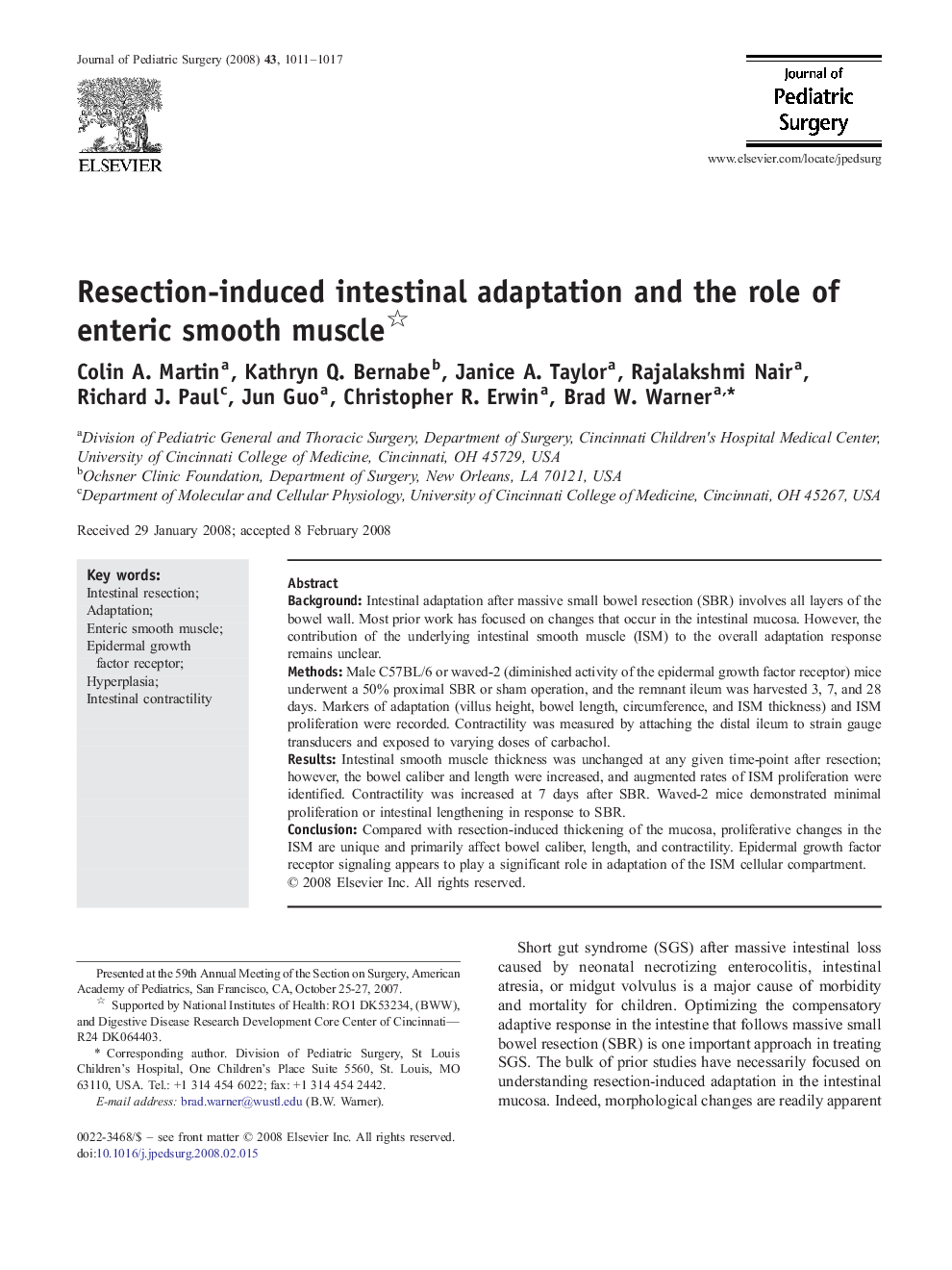| Article ID | Journal | Published Year | Pages | File Type |
|---|---|---|---|---|
| 4158553 | Journal of Pediatric Surgery | 2008 | 7 Pages |
BackgroundIntestinal adaptation after massive small bowel resection (SBR) involves all layers of the bowel wall. Most prior work has focused on changes that occur in the intestinal mucosa. However, the contribution of the underlying intestinal smooth muscle (ISM) to the overall adaptation response remains unclear.MethodsMale C57BL/6 or waved-2 (diminished activity of the epidermal growth factor receptor) mice underwent a 50% proximal SBR or sham operation, and the remnant ileum was harvested 3, 7, and 28 days. Markers of adaptation (villus height, bowel length, circumference, and ISM thickness) and ISM proliferation were recorded. Contractility was measured by attaching the distal ileum to strain gauge transducers and exposed to varying doses of carbachol.ResultsIntestinal smooth muscle thickness was unchanged at any given time-point after resection; however, the bowel caliber and length were increased, and augmented rates of ISM proliferation were identified. Contractility was increased at 7 days after SBR. Waved-2 mice demonstrated minimal proliferation or intestinal lengthening in response to SBR.ConclusionCompared with resection-induced thickening of the mucosa, proliferative changes in the ISM are unique and primarily affect bowel caliber, length, and contractility. Epidermal growth factor receptor signaling appears to play a significant role in adaptation of the ISM cellular compartment.
